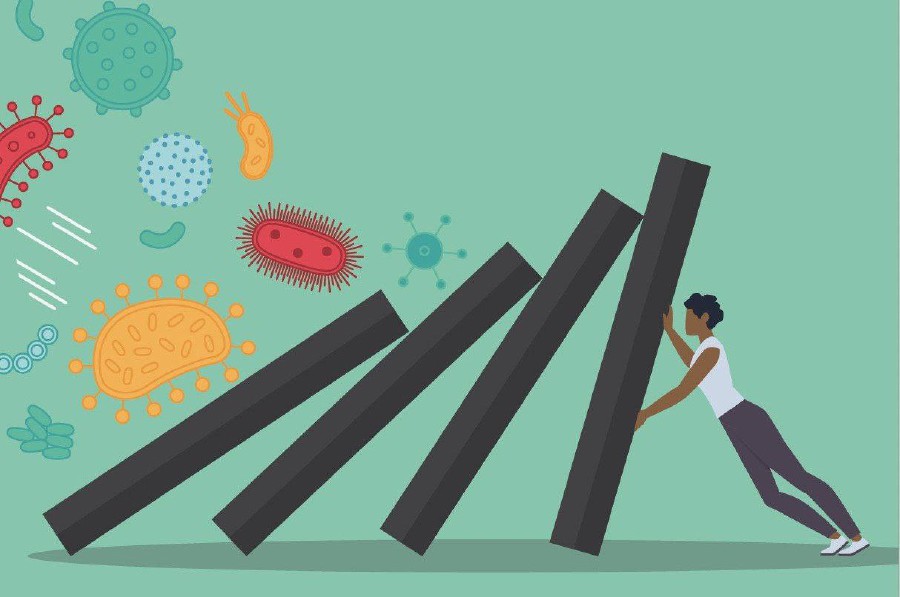KUALA LUMPUR: Curtailing pollution created by pharmaceuticals, agricultural and healthcare sectors is essential to reduce the emergence, transmission, and spread of superbugs – strains of bacteria that have become resistant to every known antibiotic – and other instances of antimicrobial resistance, known as AMR.
This is the key message of a recent report released by the United Nations Environment Programme (UNEP) on the environmental dimensions of AMR, which already is taking a serious toll on the health of humans, animals, and plants, as well as the economy.
The report, titled 'Bracing for Superbugs: Strengthening environmental action in the One Health response to antimicrobial resistance' was launched at the Sixth Meeting of the Global Leaders Group on AMR, held in Barbados.
"The environmental crisis of our time is also one of human rights and geopolitics - the antimicrobial resistance report published by UNEP today is yet another example of inequity, in that the AMR crisis is disproportionately affecting countries in the Global South countries," said Prime Minister of Barbados, Mia Amor Mottley, who is also Chair of the One Health Global Leaders Group on Antimicrobial Resistance.
"We must remain focused on turning the tide in this crisis by raising awareness and by placing this matter of global importance on the agenda of the world's nations," she said in a statement.
The UNEP report provides evidence that the environment plays a key role in the development, transmission and spread of AMR.
It noted that antimicrobials – such as antibiotics, antifungals and disinfectants – were important in treating infections and diseases.
However, it said their increased use and pollution, coupled with extreme weather patterns and higher temperatures, led to the spread of superbugs, microorganisms that were resistant to antibiotics.
This, it said meant that antimicrobials used to prevent and treat infections in humans, animals and plants might turn ineffective, with modern medicine no longer able to treat even mild infections.
Listed by the World Health Organisation (WHO) as among the top 10 global threats to health, it is estimated that in 2019, 1.27 million deaths were directly attributed to drug-resistant infections globally, and 4.95 million deaths worldwide were associated with bacterial AMR (including those directly attributable to AMR).
AMR is expected to cause 10 million additional direct deaths annually by 2050. This equals the number of deaths caused globally by cancer in 2020.
The UNEP report further shared that the economic toll of AMR is expected to result in a gross domestic product (GDP) drop of at least US$3.4 trillion (RM15.08 trillion) annually by 2030, pushing 24 million more people into extreme poverty.
The report, therefore, called for a multisectoral One Health response in line with the work of the Quadripartite Alliance, including UNEP, the Food and Agriculture Organisation, WHO, and the World Organisation for Animal Health.
UNEP Executive Director, Inger Andersen noted that the triple planetary crisis, which entailed higher temperatures and extreme weather patterns, land-use changes that altered its microbial diversity, as well as biological and chemical pollution, contributed to the development and spread of AMR.

"Pollution of air, soil, and waterways undermines the human right to a clean and healthy environment. The same drivers that cause environment degradation are worsening the antimicrobial resistance problem.
"The impacts of anti-microbial resistance could destroy our health and food systems.
"Cutting down pollution is a prerequisite for another century of progress towards zero hunger and good health," Andersen said.
The UNEP report highlighted a set of measures to address the decline of the environment and the rise of AMR, especially in addressing key pollution sources from poor sanitation, sewage, community and municipal wastes.
According to the report, it was crucial to create robust and coherent national level governance, planning, regulatory, and legal frameworks, and establish coordination and collaboration mechanisms to prevent and reduce such pollutants.
Further, it called for increased global efforts to improve integrated water management and promote water, sanitation, and hygiene to limit the development and spread of AMR in the environment as well as to reduce infections and the need for antimicrobials.
It also emphasised increased integration of environmental considerations into AMR National Action Plans, and AMR into environmental-related plans such as national chemical pollution and waste management programs, national biodiversity, and climate change planning.
In addition, it highlighted the need to establish international standards for what constituted a good microbiological indicator of AMR from environmental samples.
AMR, it said required a One Health response that recognises that the health of people, animals, plants, and the environment are closely linked and interdependent.
"Prevention is at the core of the action needed to halt the emergence of AMR and environment is a key part of the solution.
"Comprehensive and coordinated strengthening of environmental action in the One Health response to AMR will reduce the risk and burden of AMR on humans and nature, as well as help address the triple planetary crisis."
The One Health Joint Plan of Action provides a set of activities that aim to strengthen collaboration, communication, capacity building, and coordination across all sectors responsible for addressing health concerns at the human-animal-plant-environment interface.



